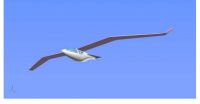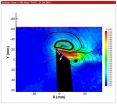(Press-News.org) BOSTON, Mass. (November 21, 2010)—As debilitating as disease can be, sometimes it acts as a teacher.
Researchers at Harvard Medical School and the Harvard School of Dental Medicine have found that by mimicking a rare genetic disorder in a dish, they can rewind the internal clock of a mature cell and drive it back into an adult stem-cell stage. This new "stem cell" can then branch out into a variety of differentiated cell types, both in culture and in animal models.
"This certainly has implications for personalized medicine, especially in the area of tissue engineering," says Bjorn Olsen, the Hersey Professor of Cell Biology at Harvard Medical School and Dean of Research at the Harvard School of Dental Medicine.
These findings appear November 21, online in Nature Medicine.
Fibrodysplasia Ossificans Progressiva (FOP), which affect fewer than 1,000 people worldwide, is a horrific genetic disease in which acute inflammation causes soft tissue to morph into cartilage and bone. Over the course of a few decades, patients gradually become thoroughly ossified, as though parts of their body have turned to stone. There is no cure or treatment.
Damian Medici, an instructor of medicine at Harvard Medical School and Beth Israel Deaconess Medical Center, found that, unlike normal skeletal tissue, the pathological cartilage and bone cells from these patients contained biomarkers specific for endothelial cells—cells that line the interior of blood vessels. This led him to question whether or not the cartilage and bone growing in soft tissues of FOP patients had an endothelial origin.
Medici and his colleagues transferred the mutated gene that causes FOP into normal endothelial cells. Unexpectedly, the endothelial cells converted into a cell type nearly identical to what are called mesenchymal stem cells, or adult stem cells that can differentiate into bone, cartilage, muscle, fat, and even nerve cells. (Embryonic stem cells have the potential to become any type of cell, whereas adult stem cells are limited.)
What's more, through further experiments the researchers found that instead of using the mutated gene to induce the transformation, they could incubate endothelial cells with either one of two specific proteins (growth factors TGF-beta2 and BMP4) whose cellular interactions mimicked the effects of the mutated gene, providing a more efficient way to reprogram the cells.
Afterwards, Medici was able to take these reprogrammed cells and, in both culture dishes and animal models, coax them into developing into a group of related tissue types.
"It's important to clarify that these new cells are not exactly the same as mesenchymal stem cells from bone marrow," says Medici. "There are some important differences. However, they appear to have all the potential and plasticity of mesenchymal stem cells."
"The power of this system is that we are simply repeating and honing a process that occurs in nature," says Olsen. "In that sense, it's less artificial than other current methods for reprogramming cells."
According to study collaborator Frederick Kaplan, Isaac & Rose Nassau Professor of Orthopaedic Molecular Medicine at the University of Pennsylvania School of Medicine and a world expert on FOP, "While we want to use this knowledge to stop the renegade bone formation of FOP, these new findings provide the first glimpse of how to recruit and harness the process to build extra bone for those who desperately need it."
Medici and Olsen echo this, stating that the most direct application for these findings is the field of tissue engineering and personalized medicine. It is conceivable that transplant patients may one day have some of their own endothelial cells extracted, reprogrammed, and then grown into the desired tissue type for implantation. Host rejection would not be an issue.
###
This research was funded by the National Institutes of Health.
Full citation
Nature Medicine, early online publication, Nov 21, 2010
"Conversion of vascular endothelial cells into multipotent stem-like cells"
Damian Medici(1), Eileen M Shore(2), Vitali Y Lounev(2,4), Frederick S Kaplan(2,4,5), Raghu Kalluri(1,6,7) & Bjorn R Olsen(8)
1-Division of Matrix Biology, Department of Medicine, Beth Israel Deaconess Medical Center, Harvard Medical School, Boston, Massachusetts, USA.
2-Deparment of Orthopaedic Surgery, University of Pennsylvania School of Medicine, Philadelphia, Pennsylvania, USA.
3Department of Genetics, University of Pennsylvania School of Medicine, Philadelphia, Pennsylvania, USA.
4-Center for Research in Fibrodysplasia Ossificans Progressiva and Related Disorders, University of Pennsylvania School of Medicine, Philadelphia, Pennsylvania, USA.
5-Department of Medicine, University of Pennsylvania School of Medicine, Philadelphia, Pennsylvania, USA.
6-Department of Biological Chemistry and Molecular Pharmacology, Harvard Medical School, Boston, Massachusetts, USA.
7Harvard–Massachusetts Institute of Technology Division of Health Sciences and Technology, Boston, Massachusetts, USA.
8-Department of Developmental Biology, Harvard School of Dental Medicine, Boston, Massachusetts, USA.
Harvard Medical School has more than 7,500 full-time faculty working in 11 academic departments located at the School's Boston campus or in one of 47 hospital-based clinical departments at 17 Harvard-affiliated teaching hospitals and research institutes. Those affiliates include Beth Israel Deaconess Medical Center, Brigham and Women's Hospital, Cambridge Health Alliance, Children's Hospital Boston, Dana-Farber Cancer Institute, Forsyth Institute, Harvard Pilgrim Health Care, Hebrew SeniorLife, Joslin Diabetes Center, Judge Baker Children's Center, Massachusetts Eye and Ear Infirmary, Massachusetts General Hospital, McLean Hospital, Mount Auburn Hospital, Schepens Eye Research Institute, Spaulding Rehabilitation Hospital, and VA Boston Healthcare System.
END
STANFORD, Calif. — Researchers at the Stanford University School of Medicine have successfully transformed normal human tissue into three-dimensional cancers in a tissue culture dish for the first time. Watching how the cells behave as they divide and invade surrounding tissue will help physicians better understand how human cancers act in the body. The new technique also provides a way to quickly and cheaply test anti-cancer drugs without requiring laboratory animals.
"Studies of this type, which used to take months in animal models, can now occur on a time scale of ...
WASHINGTON, D.C., November 21, 2010 -- Airplanes do not look much like birds -- unless you were to imagine a really weird bird or a very strange plane -- but should they? This question is exactly what a pair of engineers in California and South Africa inadvertently answered recently when they set about re-thinking the ubiquitous tube-and-wings aircraft architecture from scratch in order to make airplanes more fuel efficient.
The modern airplane design works well, but from a fuel efficiency standpoint, could planes be designed more aerodynamically -- to lower drag and ...
WASHINGTON, D.C., November 21, 2010 -- For centuries, hunters have imitated their avian prey by whistling through their fingers or by carving wooden bird calls. Now a team of physicists at Harvard University in Cambridge, Massachusetts, has reproduced many of the characteristics of real bird song with a simple physical model made of a rubber tube.
"We wanted to know if you [could] build a simple device, which has minimal control but reproduces some non-trivial aspects of bird song," says L Mahadevan, a professor at Harvard. The work is being presented today at the American ...
WASHINGTON, D.C., November 21, 2010 -- Hummingbirds rank among the world's largest and most accomplished hovering animals, but how do they manage it in gusty winds?
A team of researchers at New Mexico State University, Los Alamos National Laboratory, Technische Universiteit Eindhoven, and Continuum Dynamics Inc. has built a robotic hummingbird wing to discover the answer, which they describe today at the American Physical Society Division of Fluid Dynamics (DFD) meeting in Long Beach, CA
Hummingbirds do not fly like other birds, whose wings flap up and down, explained ...
WASHINGTON, D.C., November 21, 2010 -- Jump ropes are used by kids for fun and by athletes for training. But what about the underlying physics? How do jump ropes work? Can important engineering principles be studied?
Jeff Aristoff and Howard Stone of Princeton University have built themselves a robotic jump rope device that controls all the rope parameters -- rope rotation rate, rope density, diameter, length, and the distance between "hands." They capture the motion of the ropes by high-speed cameras, one to the side and one at the end. Then they compare the observed ...
WASHINGTON, D.C., November 21, 2010 -- Magnetic resonance imaging (MRI), a medical imaging technology used to image organs and soft tissues, may hold the key to improving the efficiency of jet engines, according to Lt. Colonel Michael Benson, a Ph.D. student in Mechanical Engineering at Stanford University.
In only a few hours, an MRI collects as much three-dimensional data on flow and mixing as conventional methods that take two or more years of intensive measurement. This promises to slash the time needed to develop and test new designs that improve efficiency and ...
WASHINGTON, D.C., November 22, 2010 -- From a baby's first blurted "bowl!'" for the word "ball" to the whispered goodbye of a beloved elder, the capacity for complex vocalizations is one of humankind's most remarkable attributes -- and perhaps one we take for granted most of our lives.
Not so for people who are afflicted with paralysis to their vocal folds and who suffer the social stigma of affected speech. Nor so for engineering professor Michael Plesniak and post-doctoral researcher Byron Erath at the George Washington University (GWU) Biofluid Dynamics Laboratory ...
WASHINGTON, D.C., November 21, 2010 -- A milestone in the history of renewable energy occurred in the year 2008 when more new wind-turbine power generation capacity was added in the U.S. than new coal-fired power generation. The costs of producing power with wind turbines continues to drop, but many engineers feel that the overall design of turbines is still far from optimal.
New ideas for enhancing the efficiency of wind turbines are being presented this week at the American Physical Society Division of Fluid Dynamics meeting in Long Beach, CA.
One issue confronting ...
SAN ANTONIO, Texas (Nov. 21, 2010) — What prompts normal cells to transform themselves into cancerous cells? Researchers from Texas institutions, including the UT Health Science Center San Antonio, have identified factors in the very first step of the process and reconstituted this first step in the test tube. The latter accomplishment was reported Sunday [Nov. 21] in the top-tier journal Nature Structural & Molecular Biology.
The DNA molecule — the elegant, twin-stranded necklace of life in all cells — gets broken and repaired all the time. Breaks are caused by the body's ...
Global carbon dioxide (CO2) emissions – the main contributor to global warming – show no sign of abating and may reach record levels in 2010, according to a study led by the University of Exeter (UK).
The study, which also involved the University of East Anglia (UK) and other global institutions, is part of the annual carbon budget update by the Global Carbon Project.
In a paper published today in Nature Geoscience, the authors found that despite the major financial crisis that hit the world last year, global CO2 emissions from the burning of fossil fuel in 2009 were ...

